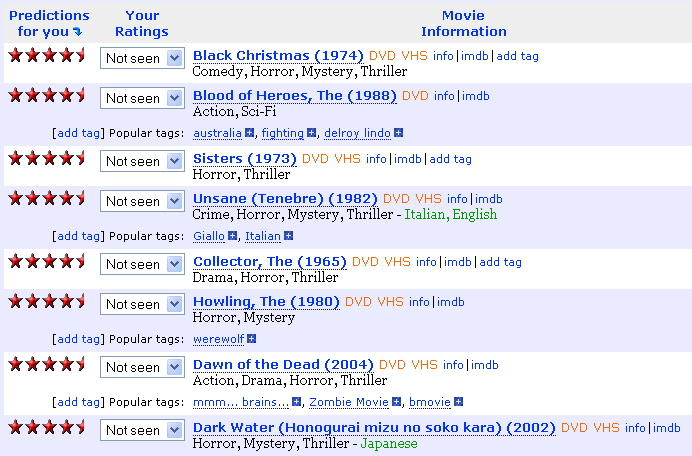Comments
Reference
Tag Expression: Tagging with Feeling
Jesse Vig, Matthew Soukup, Shilad Sen, John Riedl
User interface software and technology
Summary
Tagging systems have become very popular in community sites as of late. In this paper Vig et al. explore the novel idea of using affect or feelings in a tagging system that helps users define how they feel about a particular tag or how a it applies to a particular item. In order to conduct their research, the authors utilized the website movieLens where users can rate movies and get movie recommendation as a reward. While deciding on a wide variety of factors that would affect the user experience, the authors explore several ideas for each part of the interface that is available to the users. For instance, the authors constantly evaluate the reasons for using a 3 term affect (like, dislike, neutral) as opposed to the star rating system that is widely popular on other movie rating sites. They also prove their reasons for using a collective measurement that shows the community's preference about a particular tag. Other options included totalitarian ratings in which only the majority of votes would be represented on a tag and a histogram interface where all votes would be represented on a tag. However, due to the limited space available the authors settled for using the collective measurement (collective measurement also shows some features present in totalitarian and histogram-based ratings). Data collection was performed over a period of three months in which the authors collected information from logs and online interviews. After all the user activity was collected, it was compared to user activity from the previous system. This allowed the authors to make conclusions about their choice of components for their tagging system. By using affect on an individual tag basis (although the overall tag rating is collective), Vig et al. created a popular tagging system that has a community-oriented behavior in which users were able to share their feelings.
Discussion
This was a very long, yet interesting article. It was very well thought out and the authors seemed to accomplish what they set out to do. I would like to see work that implements recommendation algorithms using the information provided by the users.

No comments:
Post a Comment